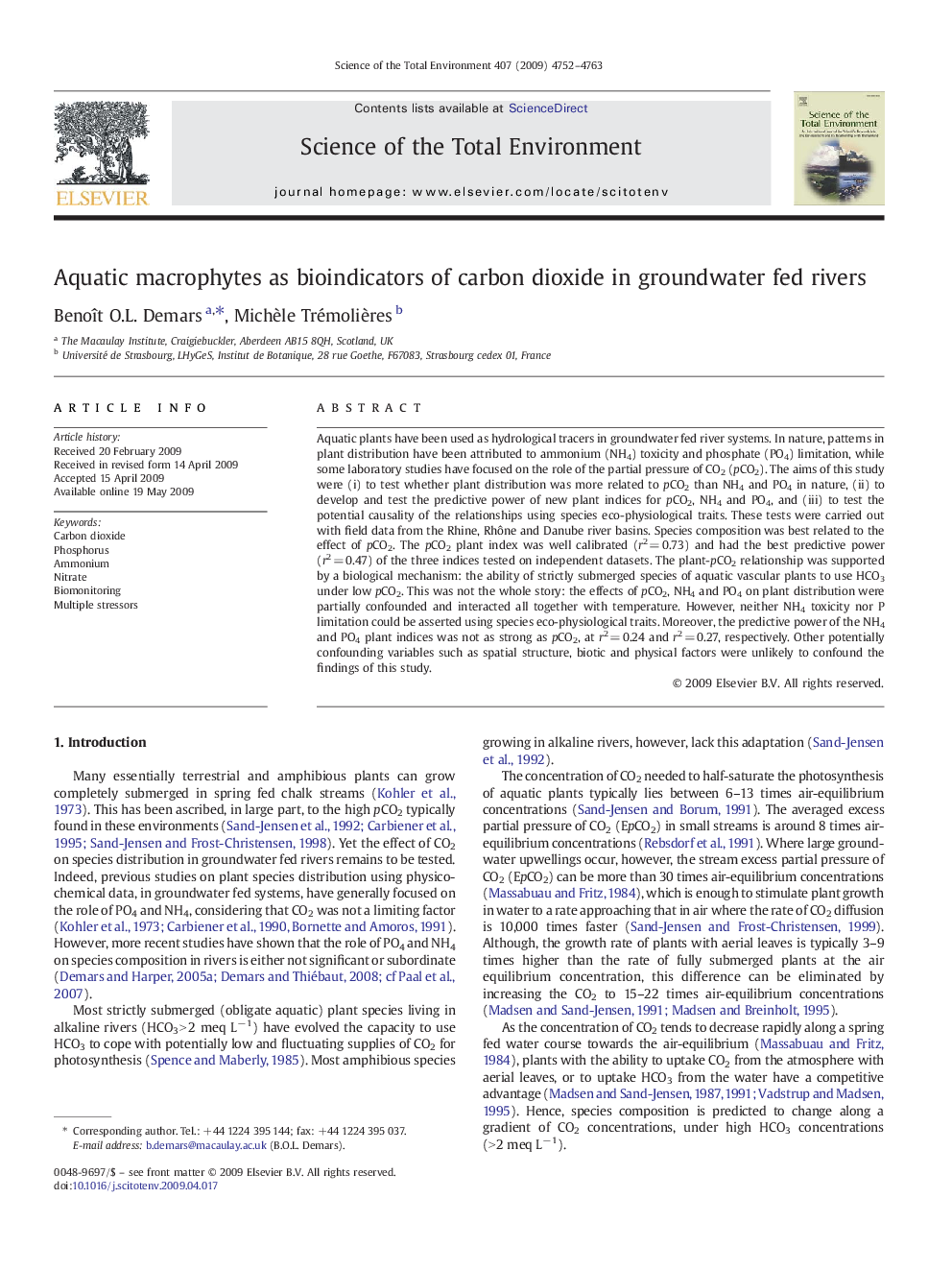| Article ID | Journal | Published Year | Pages | File Type |
|---|---|---|---|---|
| 4431271 | Science of The Total Environment | 2009 | 12 Pages |
Aquatic plants have been used as hydrological tracers in groundwater fed river systems. In nature, patterns in plant distribution have been attributed to ammonium (NH4) toxicity and phosphate (PO4) limitation, while some laboratory studies have focused on the role of the partial pressure of CO2 (pCO2). The aims of this study were (i) to test whether plant distribution was more related to pCO2 than NH4 and PO4 in nature, (ii) to develop and test the predictive power of new plant indices for pCO2, NH4 and PO4, and (iii) to test the potential causality of the relationships using species eco-physiological traits. These tests were carried out with field data from the Rhine, Rhône and Danube river basins. Species composition was best related to the effect of pCO2. The pCO2 plant index was well calibrated (r2 = 0.73) and had the best predictive power (r2 = 0.47) of the three indices tested on independent datasets. The plant-pCO2 relationship was supported by a biological mechanism: the ability of strictly submerged species of aquatic vascular plants to use HCO3 under low pCO2. This was not the whole story: the effects of pCO2, NH4 and PO4 on plant distribution were partially confounded and interacted all together with temperature. However, neither NH4 toxicity nor P limitation could be asserted using species eco-physiological traits. Moreover, the predictive power of the NH4 and PO4 plant indices was not as strong as pCO2, at r2 = 0.24 and r2 = 0.27, respectively. Other potentially confounding variables such as spatial structure, biotic and physical factors were unlikely to confound the findings of this study.
